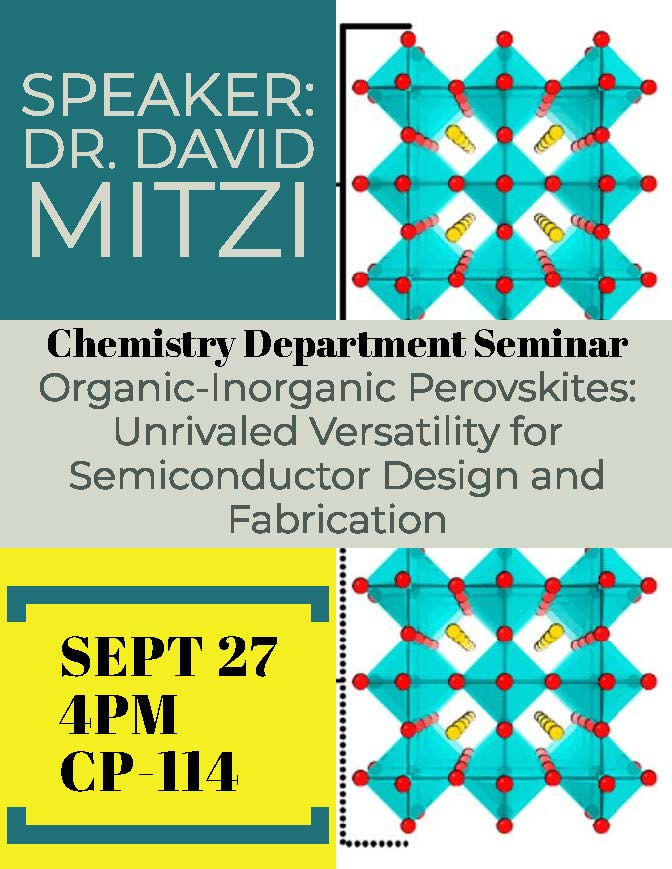 Bio: David Mitzi is the Simon Family Professor at Duke University, with appointments to the Departments of Mechanical Engineering and Materials Science and Chemistry. He received his B.S. in Electrical Engineering and Engineering Physics from Princeton University (1985) and his Ph.D. in Applied Physics from Stanford University (1990). Prior to joining the faculty at Duke (2014), Dr. Mitzi spent 23 years at IBM’s Watson Research Center, where his focus was on the search for and application of new electronic materials, including organic-inorganic perovskites and inorganic materials for photovoltaic, LED, transistor and memory applications. For his final five years at IBM, he served as manager for the Photovoltaic Science and Technology Department, where he initiated/managed a multi-company program to develop a low-cost, high-throughput approach to deposit thin-film chalcogenide-based absorbers for high-efficiency photovoltaics. Dr. Mitzi has recently been elected a Materials Research Society (MRS) Fellow and named a Clarivate Analytics Highly Cited Researcher.
Bio: David Mitzi is the Simon Family Professor at Duke University, with appointments to the Departments of Mechanical Engineering and Materials Science and Chemistry. He received his B.S. in Electrical Engineering and Engineering Physics from Princeton University (1985) and his Ph.D. in Applied Physics from Stanford University (1990). Prior to joining the faculty at Duke (2014), Dr. Mitzi spent 23 years at IBM’s Watson Research Center, where his focus was on the search for and application of new electronic materials, including organic-inorganic perovskites and inorganic materials for photovoltaic, LED, transistor and memory applications. For his final five years at IBM, he served as manager for the Photovoltaic Science and Technology Department, where he initiated/managed a multi-company program to develop a low-cost, high-throughput approach to deposit thin-film chalcogenide-based absorbers for high-efficiency photovoltaics. Dr. Mitzi has recently been elected a Materials Research Society (MRS) Fellow and named a Clarivate Analytics Highly Cited Researcher.
Abstract: Although known for over a century, organic-inorganic hybrid perovskites have received extraordinary attention recently, because of unique physical properties for the three-dimensional (3-D) lead-based systems, which make them outstanding candidates for application in photovoltaic and related optoelectronic devices. This talk will highlight the outstanding chemical flexibility of the more diverse 2-D perovskite family. As part of the discussion, the importance of structural dimensionality for determining semiconducting character, along with opportunity for both inorganic/organic structural components to play an active role in determining hybrid properties, will be emphasized. In addition to structural/electronic flexibility of the 2-D perovskites, the talk will explore the unique challenges for preparing high-quality films of these systems, and will present recent progress along several fronts, including melt-processing and resonant-infrared matrix-assisted pulse laser evaporation. Outstanding functionality combined with versatile and facile processing provide two pillars for future application and study of this family.

